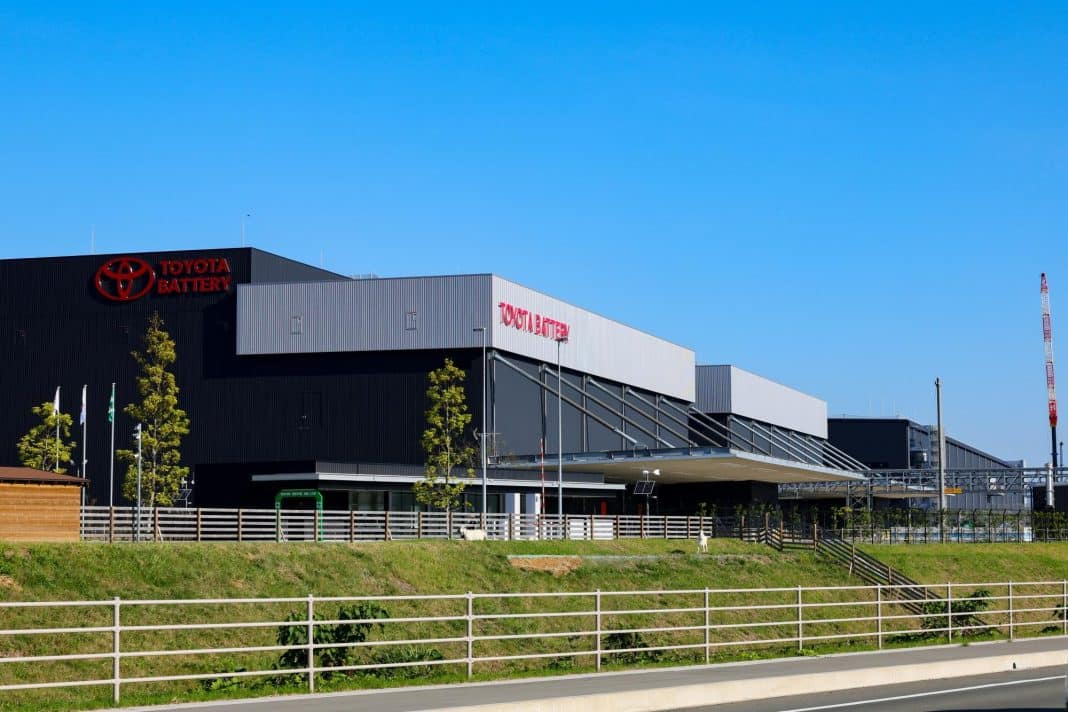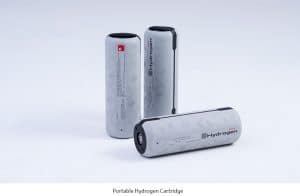Toyota is redefining the future of clean energy with its portable hydrogen cartridges showcased recently at the Japan Mobility Bizweek 2024. This cutting-edge technology could change how we power vehicles and appliances simultaneously offering a quick and sustainable alternative to time-consuming electric vehicle (EV) charging. Let’s explore it.
In March, Primearth EV Energy (PEVE) became fully owned by Toyota. On October 1, the company celebrated its new name, Toyota Battery, with a ceremony. President Masamichi Okada expressed his gratitude and promised to lead Toyota Group’s push toward electrification. He said,
“It goes without saying that we will contribute to the multi-pathway strategy with batteries for HEVs (hybrid electric vehicles), PHEVs (plug-in hybrid electric vehicles), and BEVs (battery electric vehicles), as well as secondary batteries for fuel cell vehicles. In addition, we want to explore all possible ways of supporting Toyota’s commitment to developing hydrogen-engine vehicles, including the potential for batteries to extend the cruising range or reduce fuel tank size.”
Portable Hydrogen Cartridges: A Game-Changing Innovation
Originally developed by Toyota’s mobility subsidiary, Woven, the hydrogen cartridge concept has come a long way since its initial prototype in 2022. Today, the cartridges are lighter, more compact, and easier to transport. In a way, they resemble giant AA batteries.
The press release says, that with these portable fuel sources, Toyota aims to solve one of the biggest challenges for hydrogen fuel cell electric vehicles (FCEVs): the need for refueling infrastructure with costly hydrogen pipelines.
Unlike conventional EVs that rely on electricity and can take hours to charge, Toyota’s hydrogen cartridges offer a swappable, portable power source.
- Drivers can easily and quickly replace a depleted cartridge with a full one.
- Enhances the driving experience and drivers can get back on the road faster.
- Gives a major boost to hydrogen-powered mobility and is a potential game-changer for reducing EV downtime.
Source: Toyota
Multiple Uses Beyond Vehicles
But Toyota’s vision for these hydrogen cartridges goes beyond just fueling cars. The company imagines them powering everything from motorcycles to home appliances. They could even be used for cooking, as Toyota and Rinnai Corporation demonstrated at the event with a hydrogen-powered stove. We can say, that this technology brings renewable energy directly to consumers without disrupting existing systems.
In emergencies, these cartridges could be removed from vehicles and used to power devices during blackouts. Toyota envisions a world where hydrogen cartridges can be delivered to homes alongside groceries and other essentials. Spent cartridges would be collected, refilled, and redistributed—creating a seamless system for hydrogen distribution.
Moreover, hydrogen is produced using renewable energy sources which is a great way to meet net-zero goals without relying on fossil fuels. Hydrogen can generate electricity, store energy, and burn for heat. But it emits only water and not carbon dioxide.
The new-age fuel has gained good momentum as BMW, Hyundai, and Honda are also exploring hydrogen potential. Worth mentioning, that it goes beyond the automotive sector. It could be used to power airplanes, heavy machinery, and industrial processes.
Toyota Envisions a Hydrogen-Powered Future
Toyota’s hydrogen cartridges could certainly build a more sustainable, efficient energy network. They are just bringing its vision of a hydrogen-powered future closer to reality.
The company has already well established itself in the hydrogen space. Its hydrogen-powered Corolla has been on the road since 2021. However, Toyota’s sustainability vision isn’t limited to hydrogen. The company is also investing heavily in battery technology, as we read before.
The Sweep Energy Storage System
One of the key exhibits at Japan Mobility Bizweek is Toyota’s Sweep Energy Storage System, which recycles used batteries from hybrid and electric vehicles. This system maximizes the remaining energy capacity of used batteries, supporting the wider adoption of renewable energy sources like solar and wind.
Toyota is building a circular economy with the Sweep System. The company’s focus on reducing waste and reusing materials is central to its sustainability strategy. Toyota’s innovations in both hydrogen and battery technology demonstrate its commitment to a greener future
The Road to Carbon Neutrality
Toyota aims to reach carbon neutrality across its entire vehicle life cycle by 2050. This goal involves reducing and offsetting greenhouse gas (GHG) emissions to achieve net zero across operations, manufacturing, logistics, and the full product cycle, from use to recycling. Furthermore, their science-based targets streamline their efforts to reduce emissions from every stage of the vehicle lifecycle.
Source: Toyota
The Japanese automaker firmly believes battery electric vehicles (BEVs) and hydrogen fuel cell electric vehicles (FCEVs) will rule the future. As these sustainability technologies develop, hybrids (HEVs), plug-in hybrids (PHEVs), and vehicles running on lower-carbon fuels will play a crucial role in their transition strategy.
Additionally, Toyota is collaborating with startups and other businesses to push hydrogen and renewable energy technologies further. These partnerships will advance its hydrogen cartridge concept and make the fuel cells commercially viable.




